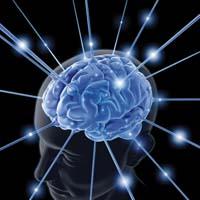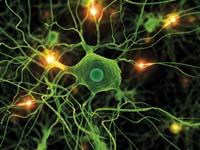Neuronal plasticity: brain guardian
UPV/EHUko Farmazia Fakultateko irakaslea eta ikertzailea. Fisiologia Saila

After an injury, several neurons die. It has long been considered that the death of these neurons was definitive. From this point of view, the affected neurons were lost forever and, in addition, once maturity reached, brain development was definitely interrupted. After adolescence, the topographic map of the brain was fully formed and each function was located in one place of the brain. The system was completely finished. Thus, the central nervous system was regarded as an immutable and irreparable organ.
This approach was very pessimistic, the brain could not adapt, performance was not improved and new functions or skills could not be achieved. In addition, after an injury there was no possibility of healing or acting against cognitive impairment derived from old age.
According to this theory, adult neurons only degenerate and cell death made the brain less efficient. The theory explained that the deterioration of the functioning of the brain was inevitable and irreversible.
Current approach: the brain is not static, but flexible
There has long been some evidence against the theory of the immutable brain. In fact, neuroanatomist Santiago Ramón y Cajal proposed a series of intrinsic mechanisms to improve the functioning of the brain, whose function was to maintain nerve structures and enable morphological changes to create new cognitive abilities. After Ramón y Cajal's investigations, more evidence was generated and the researcher's suspicions were confirmed. Over time, the brain begins to be considered a "plastic structure." And in recent years, research in neuroscience and neuropsychology has made it clear that the brain is flexible even if it is an adult. In 2004 a group of Swedish researchers demonstrated that cognitive training alters brain anatomy and activity. In Germany, other studies showed that training helps a lot to improve brain activity and recover cognitive abilities after injury. In fact, in people who participated in the research the cognitive performance was much better and the affected brain areas were reactivated and in some cases completely restored. In the same vein, a study conducted in the United States in 2006 concluded that cognitive training rejuvenates the brain for ten years and that, in addition, once training is completed, the level of performance achieved remains for five years. On the other hand, it is clear that the neurons of the elderly increase their branches and simapsis through the mechanism of compensation of neuronal death by aging. In fact, the branches of pyramidal neurons that are located on the brain surface are 25% longer in people 80 years of age than in 50.
All these results show that, in both children and adults, the brain is flexible and plastic. Therefore, the previous pessimistic theory is false; the nervous system is genetically programmed and develops in a synchronized way, but the brain has an enormous capacity for change. Although neuronal plasticity is greater as a young person, it can be changed and adapted to all ages. The current perspective is much more hopeful, we have a plastic brain.
Main mechanisms involved in neuronal plasticity
To understand how the brain is molded and reorganized, we must analyze three main points: first the neuronal mechanisms of brain plasticity; second, the neurotransmitting systems involved in plasticity; and third, the maintenance and interruption factors of plasticity.
Thanks to neuronal plasticity, the branches of neurons (dendrites and axons) grow, facilitating communication between neurons, generating more synaptic contacts and high-sensitivity receptors. This change is physical and functional, that is, the morphology of the brain is reorganized to adapt to the pathological state and recover the lost function.

Neurotransmitters are necessary to initiate communication, that is, to have connections between neurons. Neurotransmitters are the chemical messengers that flow in the synapses and allow the cellular transport of the nerve impulse. The main neurotransmitter systems involved in neuronal plasticity are: N-methyl-D-aspartate system (NMDA) and gabergic system (GABA). The NMDA system uses neurotransmitter glutamate and excites neurons. The GABA system functions as an inhibitor. Along with anatomical plasticity, the synthesis and secretion process of neurotransmitters is modified, generating more chemical signals in the synapses. Therefore, it changes the state of neurons (degree of excitation or inhibition).
Finally, there are several factors involved in the maintenance, regulation and completion of neuronal plasticity, which are neurotrophic factors. These factors allow the survival of neurons, prevent the death of neurons and are very important in the development and functioning of neurons. There are numerous families of neurotrophic factors, each for a specific group of neurons. The most important in neuronal plasticity are neurotrophins. Neurotrophin NFG, Neurotrophin 3 (NT3) and BDNF stand out.
Changes after an injury
Now we know. The brain can change and adapt to all ages, even in case of injury. Therefore, there are possibilities of improvement (and healing). The degree of healing depends on the affected area, the amount of tissue, the speed of medical treatment, rehabilitation programs and other characteristics of the environment.
After injury, nerve tissue responds quickly to remove edema and necrotic tissue produced after injury and create new blood vessels. In this way, the ischemic area can be irrigated and oxygen and food can reach the affected area. After this rapid initial response, new mechanisms are launched. Subsequent recovery is due to neuronal plasticity. Plastic mechanisms can be quick or late. The plasticity that quickly appears generates changes in the skin of the brain and consists in activating the synapses of little activity. Rehabilitation exercises help this process, as training turns these synapses on. The plasticity that appears later causes permanent changes in the surface of the brain, involving mechanisms such as the growth of the endrites and axons, the revitalization of synapses, the synthesis of neurotransmitters or neurotrophic factors, among others.
Adequate and inadequate plasticity: importance of follow-up
As already indicated, different mechanisms are put in place to respond to the injury, adapting it to the new situation. As a result, the brain is reorganized and some brain areas change to deal with lost functions. The changes produced by neuronal plasticity are neuroanatomical, neurochemical and functional. In some cases, the changes are adequate and improve the functioning of the brain, which is physiological plasticity. In other cases, however, plasticity is pathological and produces various damages and discomfort. Therefore, it is very important that the connections between neurons --the synapses due to plasticity - are suitable to perform a certain function, since the inadequate connections are worse than the lack of connection. On the other hand, patients develop a series of strategies and responses to compensate for loss, often leaving aside lost functions. This process must be avoided because nothing is solved in this way. Therefore, it is clear that early physiotherapeutic treatment is essential to prevent the development of pathological patterns. The growth of axons and dendrites should guide well to create adequate and functional synapses.
Strategies for driving plasticity
As we have already said, brain changes must be conducted correctly to help us recover lost functions. Therefore, therapists aim to promote physiological changes and avoid pathological changes. Training allows the brain to change and adapt properly and accelerate recovery. There are different strategies to modulate brain plasticity.
Rich environment: the environment is a very powerful factor. In a rich environment sensory stimulation is greater, it can be sensory, motor and cognitive. In fact, rats that grow in a rich environment (large boxes, labyrinths, stairs, other rats...) have more brain surface and more synapses between neurons. It can be said that the medium can alter the morphology of the brain. Therefore, therapists can use the environmental factor as a therapeutic tool.

Rehabilitation: physical exercise allows estimating neuronal plasticity. Research has concluded that, after repeated movement for a long time, the brain areas corresponding to this movement increase. Programmed exercises can have a modulating effect, repeating exercises to recover the lost motor function. Repetition generates connections between neurons in the motor skin and resuscitates the dysfunctional synapses.
Physical techniques, magnetic stimulation (TMS): low frequency magnetic stimuli seem to favor the motor surface. These stimuli excite neurons and thus improve the brain's learning ability. It seems that the subsequent training is more effective.
Pharmacology: Some medications may help in physical therapy and rehabilitation. For example, amphetamines are used to promote plasticity. On the other hand, drugs that inhibit plastic mechanisms such as benzodiazepines and anticonvulsants should be avoided. In addition, when the number of endogenous neurotrophic factors is low, synthetic neurotrophic factors can be therapeutic. The use of the NGF factor (Nerve Growth Factor) has been proposed to recover the affected neurons and promote the growth of neuronal branches.
Finally, new macromolecules such as proteins, glycoproteins and glycolypids are necessary for brain reorganization. Therefore, some synthetic precursors may be auxiliary such as orthotic acid, gangliosids or steroidal.
Neuronal plasticity: therapeutic tool
While advances in neuroscience increasingly provide information about the brain (about brain functioning and the adaptation process), much remains to be known. We only know and take advantage of a small part of the brain's potential. Neuronal plasticity has given us a new approach; the brain is not static, but flexible, and we can take advantage of this adaptability. As we know the neurochemical mechanisms that govern brain plasticity and neuroanatomical changes, we can develop new and more effective therapeutic strategies. After an injury, factors must be taken full advantage of to recover lost functions and thus minimize disability. Physiotherapists should try to take into account all the factors involved in plasticity: a rich environment, rehabilitation exercises and medications, among others.





